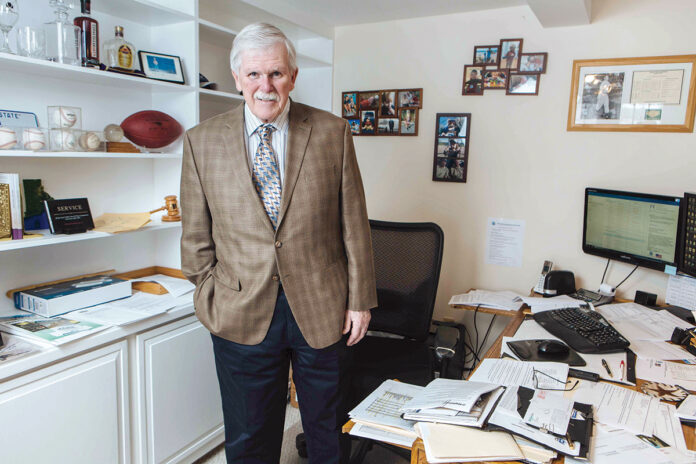
PROVIDENCE – The Rhode Island manufacturing sector reported its largest month-over-month job increase in over a year in July, though some local employers are having difficulty finding skilled workers with the skills to fill positions.
The scale of the monthly increase in manufacturing jobs, adding 1,000 jobs from June to July, hadn’t been seen in the state since June 2020, and was largely driven by the durable goods component of the sector, the R.I. Department of Labor and Training noted last week in a report on July employment figures.
“It’s a hiring boom from the perspective of manufacturers in need of bodies,” said Dave Chenevert, executive director of the Rhode Island Manufacturers Association, “and I would say they’re hiring quite a bit. But we need to get some qualified individuals as well.”
Manufacturing was the third leading sector for job growth in Rhode Island year over year in July, according to the state, with 3,800 jobs added. It is also one of three sectors, alongside construction and wholesale trade, to have recovered all jobs that were lost during the COVID-19 government shutdown.
But while companies are adding back positions, many employers are having a difficult time finding skilled workers to fill these roles, said Barbara Jackson, executive director of We Make RI, a workforce development organization.
“I think there’s an increase in openings,” Jackson said, “not an increase in hirings.”
Compared to earlier in the pandemic, “openings are up, because business is up a little bit” Jackson said, but companies “have open positions, and they remain open for a very long time.”
Jackson said that the extra training needed for workers to enter the manufacturing sector can make it difficult for companies to fill these positions in a timely manner.
“Manufacturing, where you really need skills, is not something where you can just get up off the couch and say, ‘I’ll go be a manufacturer tomorrow,” Jackson said. Manufacturing training programs, such as those offered by We Make RI, typically run from 8-12 weeks.
Fewer people are coming to these trainings and to job fairs, according to Jackson. A weekly We Make RI training fair held on Wednesday did attract 80-100 people, she said, but this attendance rate previously hadn’t been seen in 18 months.
“It’s not that there’s nobody, but the amount of people who are coming to job fairs and training fairs is substantially less than would have been the case 24 months ago,” Jackson said.
In addition to fewer potential workers coming in for training, more employees are also retiring earlier than anticipated, Jackson said, which she attributes to people reevaluating their lives during the pandemic and wanting to spend more time with their families.
But Chenevert said that the pandemic may inspire others to embark on a career change, and that manufacturing can be an attractive industry for some people.
“I think there’s a lot of interest,” Chenevert said. “These jobs are very good-paying positions that have a lot of benefits, and these are jobs where you can develop a career.”
Chenevert encouraged potential employees to look into training classes.
“What we want to do is get people to a certain level, a basic level,” Chenevert said, “and then the individual companies expand based on their own operations.”
With federal COVID-19-related unemployment benefits set to expire for over 40,000 individuals in Rhode Island next month, Chenevert also expects an increase in job seekers who may be attracted to the manufacturing sector.
On a national level, Rhode Island saw the second-largest year over year percentage point decline in its unemployment rate in July, according to the Bureau of Labor Statistics, down from 14.0% in July 2020 to 5.8% last month.
But regionally, the state’s unemployment rate remains the second-highest in New England, according to the bureau.
The state also continues to lag behind its pre-pandemic employment rates and, in addition, had 25,900 fewer residents currently in the labor force than prior to the pandemic in July.
Jacquelyn Voghel is a PBN staff writer. You may reach her at Voghel@PBN.com.












